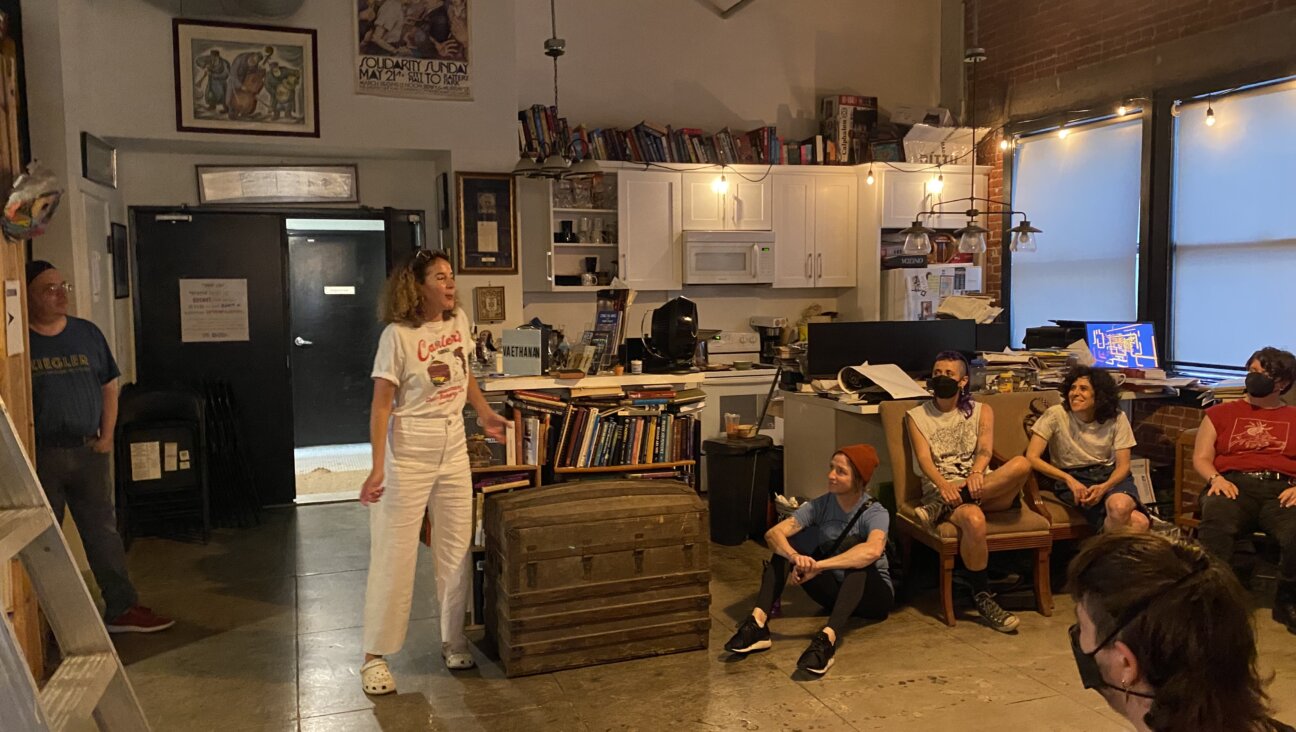7 things people say about Yiddish that drive me crazy

Image by Wikimedia Commons
This article originally appeared in the Yiddish Forverts.
As a Yiddish instructor living in Seattle, I often hear clueless assumptions and questions about mame-loshn, so I think it‘s about time we dispelled some of these stereotypes. Here are 7 things people say to me upon hearing that I teach Yiddish, as well as my responses to them.
-
Why would anyone want to study a dead language? or Nobody speaks Yiddish anymore! Even assuming this were true (shh, don’t tell the Hasidim), people still study ancient Greek and Latin, and biblical scholars continue to wrestle with ancient Hebrew and Aramaic. We also study Shakespeare to aid our study of modern English. Similarly, the more Yiddish you learn, the more you realize its immense value. Reading historical Yiddish sources can inform our understanding of the 11 million people who once spoke it daily, and maybe see that their struggles were similar to our own.
-
Yiddish is so funny! or Yiddish is so colorful — all those insults! Yes, Yiddish can be funny and colorful, and it can also be used to perform dramatic theater pieces, urge societal change, convey directions, or perfectly describe a tasty dish. If you’re telling a joke in Yiddish, then Yiddish is funny! Many (maybe all) languages have creative ways to insult people, and reducing Yiddish to simply a list of humorous phrases denigrates it.
-
Yiddish is so depressing! This comment comes from people who’ve probably only heard the songs about poverty, the Holocaust or lullabies about unrequited love and long-lost family members. Even when words can’t suffice, language attempts to express painful feelings about life conditions; from great suffering comes great art. But if you broaden your exploration, you can also find evocative Yiddish songs about nature, love and political action.
-
Isn’t Yiddish the official language of Israel? No. It’s complicated, and while some Israelis do speak Yiddish, modern Hebrew supplanted it early in the history of the modern state.
-
Yiddish is just a dialect of German or Yiddish is just sloppy German with poor grammar. Another disparaging remark about Yiddish which I wish we didn‘t have to waste time responding to, but respond we must. While Yiddish and modern German have many elements in common (including some of the grammar), and a speaker of one can understand much of the other, it’s the “just” in these statements that’s so troublesome. The “just” strips away the richness of a language that includes not only Germanic but Slavic, Hebrew, and Aramaic words, and many Jewish- or Eastern European–specific cultural references that a speaker of “just” German wouldn’t understand.
-
Do you use the Yiddish alphabet in your classes? Yes. Transliteration is helpful in a class for beginners or when photocopying songsheets for a Yiddish zingeray (singalong), but it’s ultimately less time-consuming for students to learn the alef-beys than for a teacher to create materials in YIVO-approved transliteration. Once students know the Yiddish alphabet, they gain access to a world of historical texts they can read and enjoy.
7. Why would anyone be interested in Yiddish when there are so many other things to study? To that, I simply say, “Nu, enough already!‟
A message from our CEO & publisher Rachel Fishman Feddersen

I hope you appreciated this article. Before you go, I’d like to ask you to please support the Forward’s award-winning, nonprofit journalism during this critical time.
At a time when other newsrooms are closing or cutting back, the Forward has removed its paywall and invested additional resources to report on the ground from Israel and around the U.S. on the impact of the war, rising antisemitism and polarized discourse.
Readers like you make it all possible. Support our work by becoming a Forward Member and connect with our journalism and your community.
— Rachel Fishman Feddersen, Publisher and CEO























